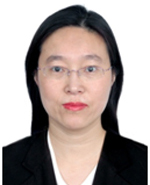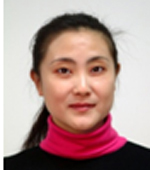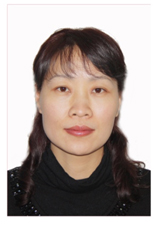Arc Erosion Behavior of W/Cu Current-Carrying Frictional Pairs

摘 要
在自制载流电弧试验机上进行了钨/铜载流摩擦副的载流电弧烧蚀试验,研究了其电弧烧蚀行为和电弧烧蚀机理。结果表明:随燃弧时间的延长,载流电弧电流下降,电压增加,电场强度则先增后降;载流电弧分为起弧、稳定燃烧和熄弧3个阶段,各阶段的时间间隔分别约占整个燃弧时间的7%,89%和4%,铜试样的严重烧蚀主要发生在起弧阶段和稳定燃烧的初期;随着试验电流的增大,金属蒸气态电弧存在时间延长,铜试样表面的电弧烧蚀坑宽度增加,深度先增后降,这与高熔点钨的沉积加剧有关。
 电弧烧蚀
电弧烧蚀  电弧热输入
电弧热输入  电弧力
电弧力  current-carrying arc
current-carrying arc  arc erosion
arc erosion  heat input of arc
heat input of arc  arc force
arc force 
Abstract
Current-carrying arc erosion tests of W/Cu current-carrying frictional pairs were carried out by the home-made current-carrying arc tester. The arc erosion behavior and arc erosion mechanism were studied. The results show that with the arcing time increasing, the current of current-carrying arc decreased, the voltage increased, and the electric field intensity first increased then decreased. The current-carrying arc was divided into three stages of ignition, stable burning and extinction. The time intervals of the three stages were about 7%,89% and 4% of the total arcing time. The serious arc erosion of copper specimen occurred at the ignition stage and at the beginning of stable burning stage. With the increase of test current, the existence time interval of the arc in metallic vapour state extended; the width of arc erosion pit on copper specimen surface increased and the depth first increased then decreased. The results were related to the increasing deposition of tungsten with high melting point.
中图分类号 TH117 DOI 10.11973/jxgccl201801004
所属栏目 试验研究
基金项目 国家自然科学基金资助项目(51375147,51405134)
收稿日期 2016/12/23
修改稿日期 2017/9/23
网络出版日期
作者单位点击查看
备注宋联美(1973-),女,河南新乡人,博士研究生
引用该论文: SONG Lianmei,ZHANG Yongzhen,SHANGGUAN Bao. Arc Erosion Behavior of W/Cu Current-Carrying Frictional Pairs[J]. Materials for mechancial engineering, 2018, 42(1): 18~22
宋联美,张永振,上官宝. 钨/铜载流摩擦副的电弧烧蚀行为[J]. 机械工程材料, 2018, 42(1): 18~22
共有人对该论文发表了看法,其中:
人认为该论文很差
人认为该论文较差
人认为该论文一般
人认为该论文较好
人认为该论文很好






参考文献
【1】张永振,杨正海,上官宝. 载流摩擦的研究现状与挑战[J]. 自然杂志, 2014, 36(4):256-263.
【2】ARGIBAY N, SAWYER W G. Low wear metal sliding electrical contacts at high current density[J]. Wear, 2012, 274/275:229-237.
【3】宋联美, 张永振, 上官宝, 等. 碳/碳复合材料的载流摩擦磨损性能及机理[J]. 机械工程材料, 2014, 38(1):76-80.
【4】YANG H J, CHEN G X, GAO G Q, et al. Experimental research on the friction and wear properties of a contact strip of pantograph-catenary system at the sliding speed of 350 km/h with electric current[J]. Wear, 2015, 332/333:949-955.
【5】李克敏,上官宝, 杜三明, 等. 摩擦速度和电流密度对铜基复合材料载流摩擦磨损性能的影响[J]. 机械工程材料, 2015, 39(3):22-31.
【6】贾利晓, 张永振, 李健,等. 浸金属碳材料的载流摩擦磨损性能研究[J]. 材料工程, 2008(12):11-18.
【7】CHEN G X, YANG H J, ZHANG W H, et al. Experimental study on arc ablation occurring in a contact strip rubbing against a contact wire with electrical current[J]. Tribology International, 2013, 61:88-94.
【8】贾利晓, 张永振, 孙乐民,等. 两种炭材料的载流摩擦磨损性能比较[J]. 材料工程,2010(9):91-95.
【9】高宗宝,吴广宁,吕玮,等. 高速电气化铁路中的弓网电弧现象研究综述[J]. 高压电器,2009, 45(3):104-108.
【10】YANG Z, ZHANG Y, ZHAO F, et al. Dynamic variation of arc discharge during current-carrying sliding and effect on directional erosion[J].Tribology International,2016,94:71-76.
【11】王俊勃,张燕,杨敏鸽,等. Fe掺杂对纳米复合Ag-SnO2电接触合金电弧演化行为的影响[J]. 稀有金属材料与工程,2006,35(12):1954-1958.
【12】吴细秀. 开关电器触头材料喷溅侵蚀模型研究及其试验[D]. 武汉:华中科技大学,2005:29-35.
【13】高国强,郝静,古圳,等.高速铁路中受电弓升弓过程弓网电气特性[J]. 高电压技术,2016,42(11):3569-3575.
【14】姜焕中.电弧焊及电渣焊[M].北京:机械工业出版社,1988:28.
【15】荣命哲.电接触理论[M].西安:西安交通大学,1999:80-90.
【16】荣命哲,贾文慧,王瑞军. 低压电器电极间发生的电弧放电及其特性[J]. 低压电器, 1998(3):9-14.
【2】ARGIBAY N, SAWYER W G. Low wear metal sliding electrical contacts at high current density[J]. Wear, 2012, 274/275:229-237.
【3】宋联美, 张永振, 上官宝, 等. 碳/碳复合材料的载流摩擦磨损性能及机理[J]. 机械工程材料, 2014, 38(1):76-80.
【4】YANG H J, CHEN G X, GAO G Q, et al. Experimental research on the friction and wear properties of a contact strip of pantograph-catenary system at the sliding speed of 350 km/h with electric current[J]. Wear, 2015, 332/333:949-955.
【5】李克敏,上官宝, 杜三明, 等. 摩擦速度和电流密度对铜基复合材料载流摩擦磨损性能的影响[J]. 机械工程材料, 2015, 39(3):22-31.
【6】贾利晓, 张永振, 李健,等. 浸金属碳材料的载流摩擦磨损性能研究[J]. 材料工程, 2008(12):11-18.
【7】CHEN G X, YANG H J, ZHANG W H, et al. Experimental study on arc ablation occurring in a contact strip rubbing against a contact wire with electrical current[J]. Tribology International, 2013, 61:88-94.
【8】贾利晓, 张永振, 孙乐民,等. 两种炭材料的载流摩擦磨损性能比较[J]. 材料工程,2010(9):91-95.
【9】高宗宝,吴广宁,吕玮,等. 高速电气化铁路中的弓网电弧现象研究综述[J]. 高压电器,2009, 45(3):104-108.
【10】YANG Z, ZHANG Y, ZHAO F, et al. Dynamic variation of arc discharge during current-carrying sliding and effect on directional erosion[J].Tribology International,2016,94:71-76.
【11】王俊勃,张燕,杨敏鸽,等. Fe掺杂对纳米复合Ag-SnO2电接触合金电弧演化行为的影响[J]. 稀有金属材料与工程,2006,35(12):1954-1958.
【12】吴细秀. 开关电器触头材料喷溅侵蚀模型研究及其试验[D]. 武汉:华中科技大学,2005:29-35.
【13】高国强,郝静,古圳,等.高速铁路中受电弓升弓过程弓网电气特性[J]. 高电压技术,2016,42(11):3569-3575.
【14】姜焕中.电弧焊及电渣焊[M].北京:机械工业出版社,1988:28.
【15】荣命哲.电接触理论[M].西安:西安交通大学,1999:80-90.
【16】荣命哲,贾文慧,王瑞军. 低压电器电极间发生的电弧放电及其特性[J]. 低压电器, 1998(3):9-14.
相关信息
























